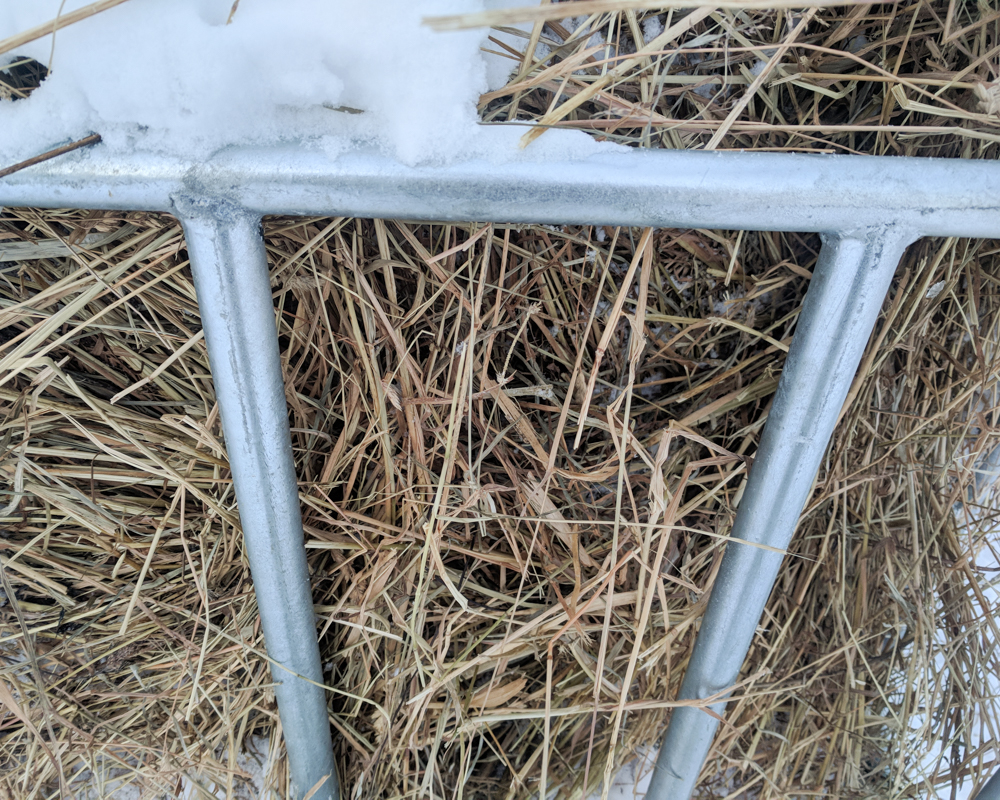My sheep and I have been spoiled by Keith Short, my hay supplier. When I called him last year, with winter fast approaching, he sold me lovely baleage and dry hay, nutritious, well-made stuff that the sheep loved to eat. When I bought from him again this year, the quality was as good or better than last year’s. So when Bill and I were looking for some additional feed for his lambs, I made the erroneous assumption that because Keith’s hay is so good, others’ should be as well (Keith didn’t have any more round bales to sell). But the lambs were all too willing to demonstrate the folly of my assumption:
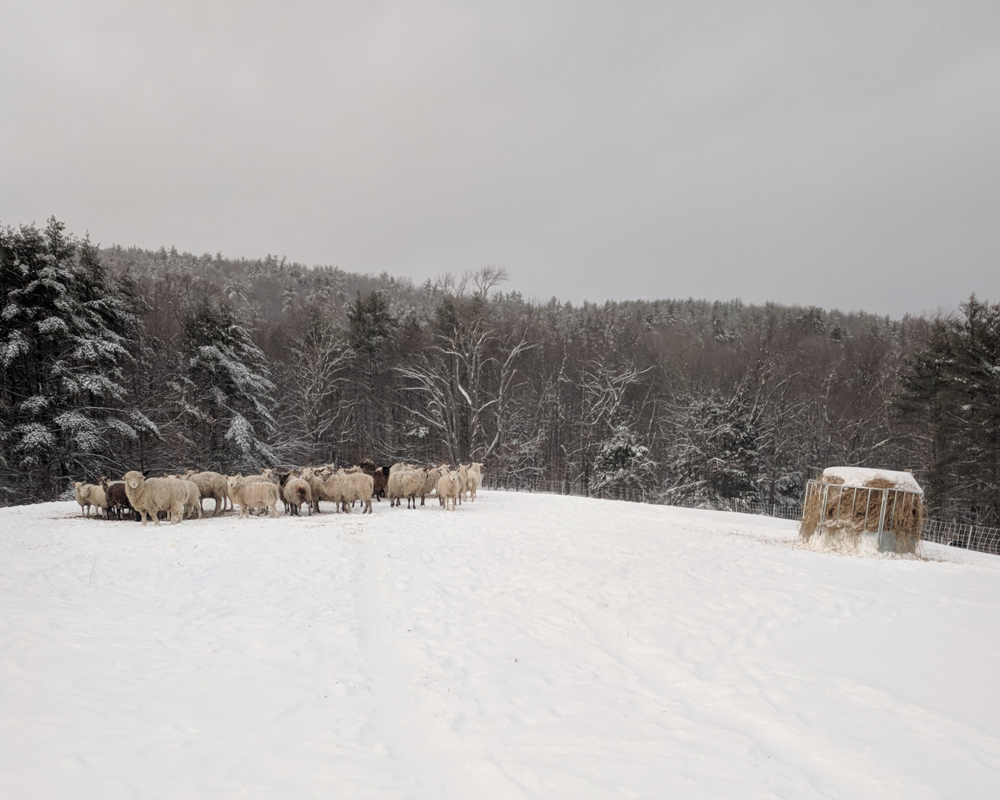
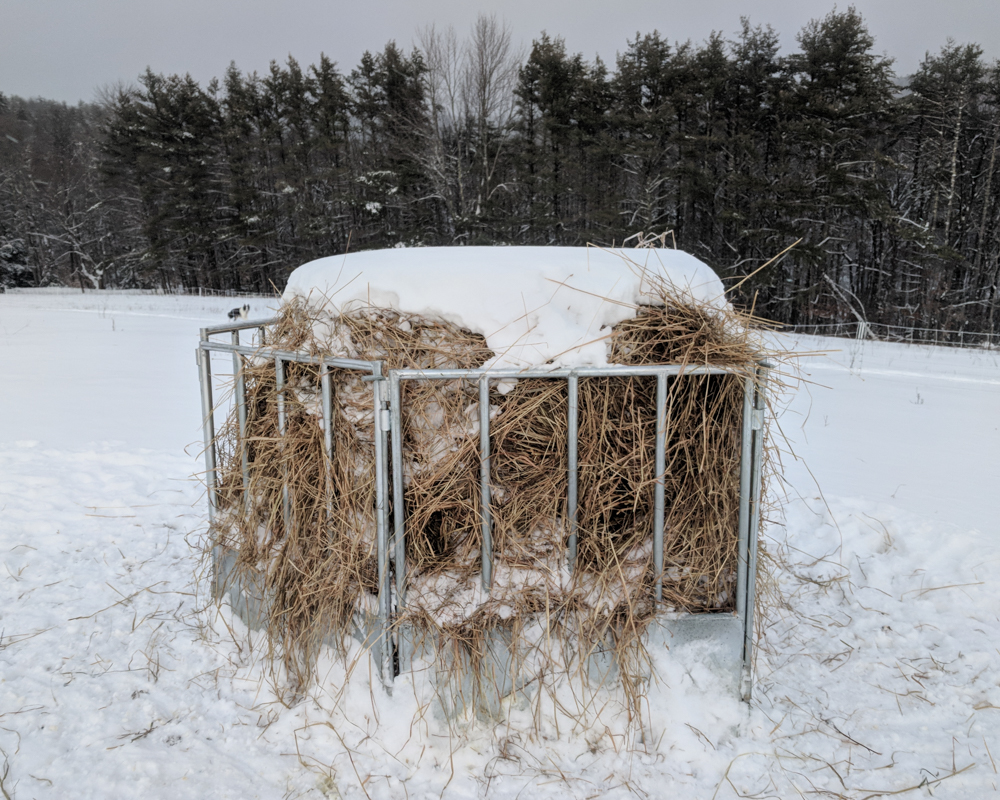
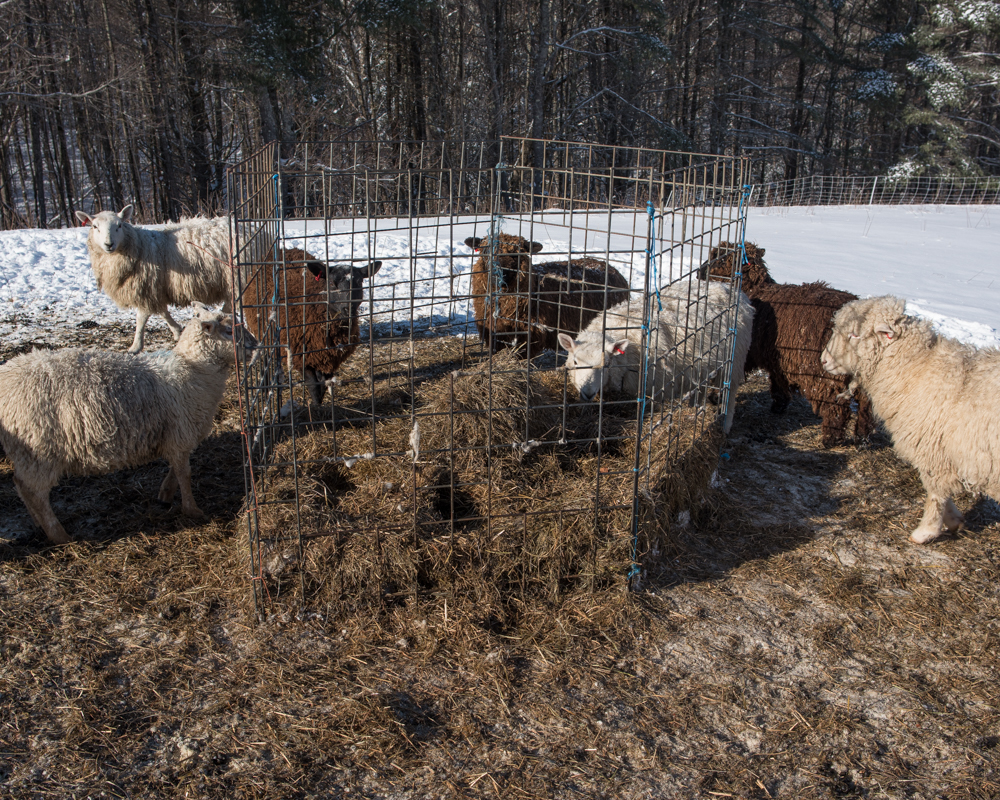
They were fighting over the last scraps of feed from one of Keith’s bales while completely ignoring the bale from the new supplier, though both bales went out at the same time. And the lambs had it right: Keith’s baleage looks and smells like green grass, cut before it’s gone to seed when the sugar is gone from the leaves and stems. The other stuff looked like straw — yellow, stemmy, and dry, with barely a leaf in sight; but lots of seed heads showing that the field was over-mature when it was cut.
When grass is cut at this stage, it has neither the sugar content nor the moisture to sustain the fermentation central to making baleage, and this bale didn’t have the grassy, vinegary smell of the stuff Keith makes. Since the whole point of my taking Bill’s lambs for a couple of months was to fatten them, he and I agreed that I shouldn’t force the issue — give the lambs the feed they wanted, and be prepared to make a bonfire with 10,000lbs of unpalatable hay.
As a last resort, I brought the rejected bale to the Fortress where the cheviot group os hanging out, and I was very pleasantly surprised that they tucked right in.
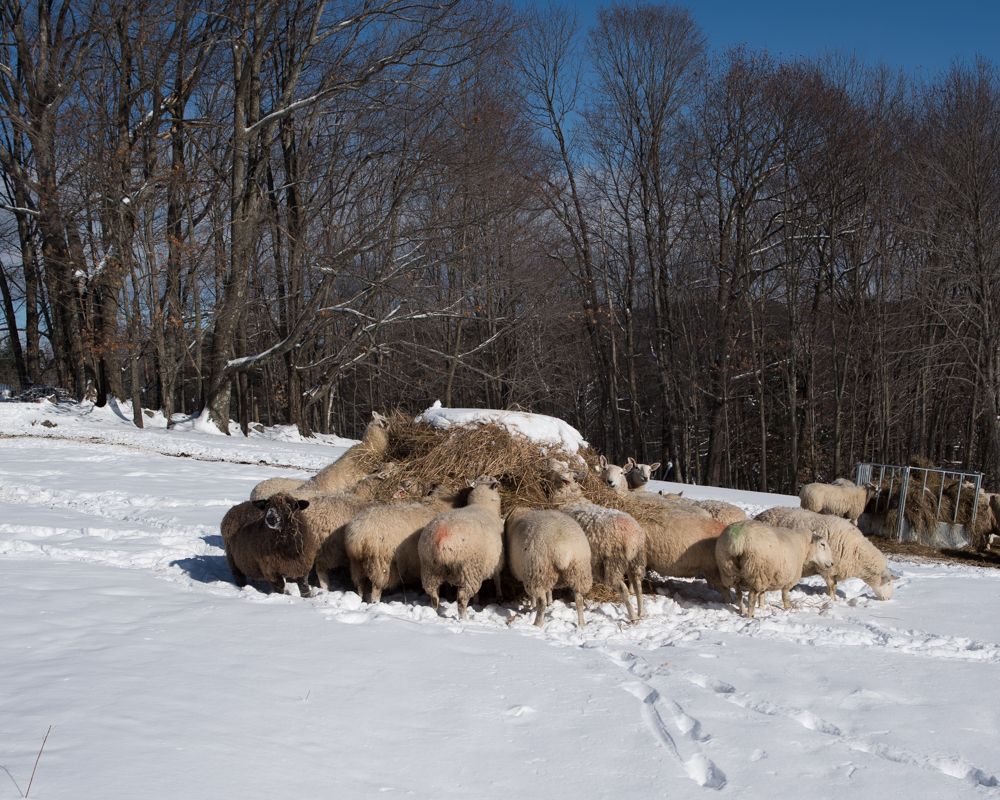
And but for the dogs, everyone ate happily ever after.
Tagged: bad hay, cheviot, ewes, good hay, Keith Short, lambs, taking for granted
